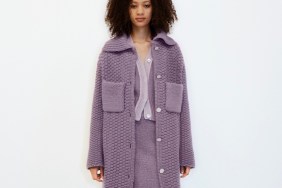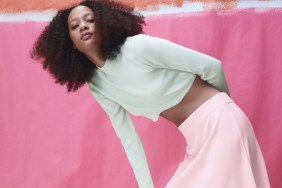Fashion is often seen as the icing on the cake, the adornment to our pre-existing lives, but fashion is so much more than embellishment. Fashion reflects and informs our society’s culture. It is our aspirations, our conformity, our individuality, our politics and so much more.
Nothing demonstrates the mirroring of society through fashion more than the miniskirt. The evolution of the miniskirt is a tale of post-wartime austerity, sexual liberation and youth rebellion.
Although there were allusions to the miniskirt in 5400-4700 B.C, in contemporary fashion, the mini skirt first came to life in the 60s on the streets of London with Dame Mary Quant (although this is debated as Parisian designer André Courrèges developed his futurist short skirts at the same time).
Mary designed clothes for young women of the day, claiming that the miniskirt was for functionality, something you could move in. It also was the sprit of the time. “A miniskirt was a way of rebelling,” Mary said.

Mary Quant in 1965, Photo: Getty
But to truly see why the mini skirt was so rebellious and liberating in its time we must look outside of fashion to discover what the youth of the 60s found so restricting. So allow me to briefly run over the socio-political landscape of the pre-mini era and how this relates to fashion and the development of everyone’s summertime favourite, the miniskirt.
1939-1945

1940, Photo: Getty
World War II wartime caused shortages of everything from iron to nylon. The government imposed restrictions on clothing manufacturing and purchases. Men could no longer have double-breasted suits, the only elastic available was for women’s undergarments and skirt hems rose to knee length in order to use less fabric.
Women were also entering the work force whilst the men were away; this required clothing to be more practical. Women’s fashion was simple, unfeminine and utilitarian.
1945-47
Post Wartime debt and post war inflation were big on people’s minds, this made the post war fashion quite modest.
1947-49

Dior dress in 1947, Photo: Getty
Clothing restriction ended the resurgence of Haute Couture after the austerity of war had begun. As Parisian fashion houses reopened we saw the birth of Christian Dior’s famous ‘New Look’ in February 1947. The skirt hung just below the calf and was fitted at the waist. ‘New Look’ rejected the masculine look of wartime and brought us a soft, flowing femininity.
Early – Mid 1950s
Economy boom leads to mass consumerism. With the men of war returning and getting back to work, many women returned to the home to have children, leading to what we now call the “baby boom”. The economy was thriving and new marketing strategies from the fashion industry were developed to keep it that way.
They were aimed specifically at women, aka the bored housewives who did the shopping. With these new marketing strategies, women were told how to dress, to impress their man, or how to get one. Life without a husband in the 50s was scary, you were cast out from society and branded marketing told you how to avoid this.

Photo: Getty
This also led to limited diversity in fashion as women became afraid to break the mould. The combination of cheaper synthetic fabrics being developed, the desire for a more lavish lifestyle out of post wartime austerity and socially enforced conformity lead to the 50s fashion we all know – excessive fabric in big puffy skirts, feminine shapes in bright and bold colours and most of all uniformity.
Late 50s — Youth Rebellion Building
Out of all restrictive societies comes rebellion. Women were tired of conforming in their new lives, and the youth, who had mostly lived their lives in post war safety and abundance, couldn’t understand their parents’ strict moral attitudes. We start to see new styles coming out in the form of pedal pushers, leather jackets and the rebellious greaser style.
1960s — Sexual Revolution

Twiggy wearing a miniskirt in France, 1966, Photo: Getty
The time of social restlessness is prime for new ideals to form. “The Feminine Mystique” by Betty Friedan was released in 1963, discussing the many concerns of women’s restrictive lives, along with the 1962 release of Helen Gurley Brown’s “Sex and the Single Girl” . Feminist literature started the Second Wave Feminist movement.
This along with developments in pharmacology leading to the first oral contraceptive, “The Pill”, found new freedoms never before experienced by women. This new celebration of women’s independence and sexual liberation was expressed through their clothing.
No longer would women be restricted with corsets and weighed down with cumbersome gown-like skirts. The new fashion was wide in the waist, movable, individual and sexy. We bring you the era of the miniskirt.
“It was in the air — a mini-skirt was a way of rebelling. It stood for sensuality and sex. Wearing one was a surefire way of upsetting your parents,” observed Laurent Cotta, a fashion historian. The mini skirt was a reaction to wartime, to pharmaceutical development, a response to authors and academics and a cry out of youth rebellion.
The sexual revolution wouldn’t have happened if it wasn’t for the conformity of the consumer market of the 50s as a response to the austerity born from wartime.
Yes, Mary may have presented it to the masses, but the world was asking for it. Fashion is not only a reaction to itself, searching for the next new season style, but also an inevitable reaction to the zeitgeist.
I think Mary Quant said it best herself. “Fashion is not frivolous. It is a part of being alive today.”






